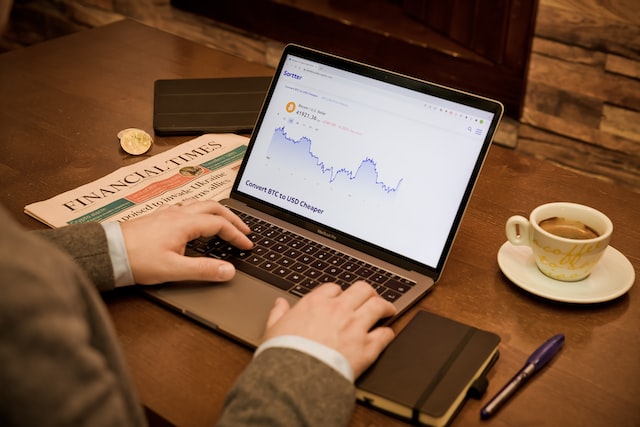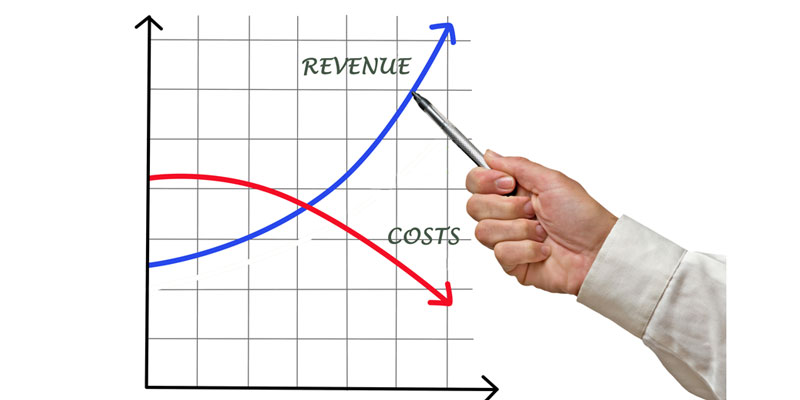The term intraday means "within the day." Intraday is a shorthand term used in the financial industry to refer to securities or assets that trade on the markets during regular working hours. Exchange-traded funds (ETFs), stocks, and bonds are some of these securities.
The term "intraday" also indicates the highs and lows that the securities crossed throughout the business day. Short-term or day traders place multiple investments during a single trading session and pay close attention to intraday price changes. When the market ends, these active traders close out all their positions.
On weekdays, the stock market's primary trading times are 9:30 a.m. ET and 4:00 p.m. ET (except for holidays).
Basics of Intraday Trading

The term "intraday" is frequently used to describe specific securities' new highs and lows. When security reaches a new high in relation to all other prices during trading hours, it is said to have "a new intraday high," for instance. An intraday high may occasionally match the closing price.
In an effort to profit from momentary price variations, traders closely monitor intraday price movements using real-time charts. Short-term traders often employ intraday charts that are one, five, fifteen, thirty, and sixty minutes long when trading during the market day.
Scalping is a method that involves making numerous trades each day to make money off minute changes in a stock's price. Even though they may hold their positions for a longer time, intraday traders nevertheless take significant risks.
By exposing an order to a range of prices throughout the trading day, the volume-weighted average price (VWAP) orders can boost the efficiency of trade execution. VWAP provides the average price at which a specific security is traded during the trading day.
Intraday Trading Example
Stock price changes are reported during the trading day and summarized at the market closing. For example, Apple Inc. (AAPL) shares began at $174.57 and finished at $178.44 on April 4, 2022. Shares fell as low as $174.44 throughout the day, the intraday low, and reached a high of $178.49, the intraday high, during the day, as seen in the "day's range" noted to the right of the closing price.
Technical analysts and day traders who follow Apple would examine the shares' movements to see if they could identify any patterns or spot any significant gap (a significant increase in price without any trading in between is known as a substantial gap).
Intraday Trading Strategies

Similar to regular stock trading, intraday trading involves purchasing and selling securities only within a single day. In order to optimize their gains, traders who engage in these short-term transactions examine the patterns of price changes.
Intraday trading is a high-risk investment method that necessitates extensive trading knowledge. Examples of intraday trading tips include scalping, range trading, momentum trading, and technical analysis.
Scalping: Scalpers attempt to quickly enter and exit positions with marginal gains on significant numbers of trades. As a result, the numerous trades add up to substantial profits. As overnight trading can affect their gains, scalpers often only maintain the same position during the trading day. Instead, in order to hit their price objectives, they purchase and sell assets swiftly, all on the same day.
Momentum Trading: Momentum traders determine whether an asset is moving up or down. Then, they try to profit from that momentum. Momentum traders can hold stocks for more than a day but perform momentum trading only intraday.
A momentum trader may purchase a stock whose price is rising and then sell it for a profit at a higher price. A trader would short a stock and sell it if it were trending downward in order to profit from the losses. Momentum traders frequently capitalize on news-driven changes in stock prices.
Range Trading: Range traders profit from stocks that stay inside a predetermined price range for an extended time, failing to move above a predetermined price (level of resistance) or below a predetermined price (level of support). For instance, range traders will try to purchase at the low end and sell at the high end.
Technical Analysts: Using technical analysis, traders examine previous price movements in an effort to spot trends that could aid in future price prediction. They utilize that information to inform when to buy and sell stocks.
Advantages and Disadvantages of Intraday Trading
Advantages
The biggest advantage of intraday trading is that any lousy overnight news that dramatically alters the price of assets can not affect the positions. Significant economic and earnings data, broker upgrades, and downgrades that take place before or after the market closes are examples of this type of news.
Numerous other significant benefits come with intraday trading. One advantage is utilizing tight stop-loss orders, which include increasing a stop price to reduce losses from an extended position. Another is the improved access to margin, which results in more leverage.
Additionally, intraday trading gives traders more possibilities to learn.
Intraday trading might be advantageous for traders looking for quick gains because it allows you to enter and exit positions quickly.
Day trading and analysis are becoming more widely available because of technological advancements, particularly those made possible by brokerages and trading platforms.
Disadvantages
The inability of a position to experience profit rises, or in some circumstances any benefit at all, and higher commission charges as a result of trading more frequently, which reduces the profit margins a trader can expect, are disadvantages of intraday trading.
The Securities and Exchange Commission (SEC) of the United States imposes limitations on day traders. You can be restricted from making more trades if you make four round-trip trades in a week (that is, you purchase and sell the same security numerous times on the same day) and you have less than $25,000.




